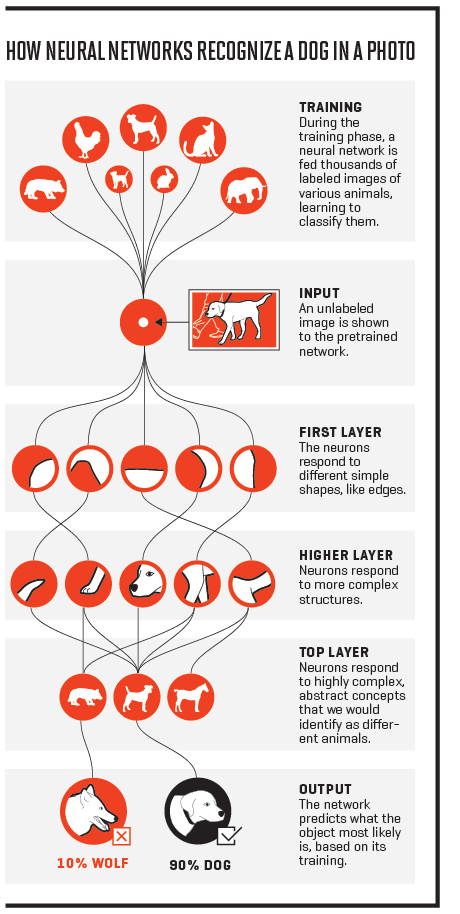Already tired of the ever-intensifying hype around artificial intelligence? Self-driving cars, house appliances that send notifications to your mobile devices, computer programs that can beat humans at computer games – you hear about such stuff in every artificial intelligence report and article you read, we know that.
copyright by techgenix.com
 And until some machine can make you pancakes in the morning and wash the dishes for you, there is no reason to get that excited yet, is there? Can that machine clean your kitchen for you and make you spaghetti without burning the meatballs? That will be the day when that can happen! Artificial intelligence has tremendous potential , but it’s still on the road and far from its destination of value-adding and easily doable automation of sophisticated computer based processes. Today, every bit of automation in computer processes is brought about by pure human intelligence that’s manifested in the form of smart algorithms, more complicate flowcharts, and untiring lab experiments. This also means that the next mega wave of automation will need more than human effort, it will need “machine effort” as well. No one said we cannot use some help! This is where machine learning makes it case as the transformative force that will fuel artificial intelligence’s growth as an enabler of massive automation.
And until some machine can make you pancakes in the morning and wash the dishes for you, there is no reason to get that excited yet, is there? Can that machine clean your kitchen for you and make you spaghetti without burning the meatballs? That will be the day when that can happen! Artificial intelligence has tremendous potential , but it’s still on the road and far from its destination of value-adding and easily doable automation of sophisticated computer based processes. Today, every bit of automation in computer processes is brought about by pure human intelligence that’s manifested in the form of smart algorithms, more complicate flowcharts, and untiring lab experiments. This also means that the next mega wave of automation will need more than human effort, it will need “machine effort” as well. No one said we cannot use some help! This is where machine learning makes it case as the transformative force that will fuel artificial intelligence’s growth as an enabler of massive automation.
How can deep learning catalyze automation for enterprises?
Wait, isn’t it the IT team that does the automation? Can IT itself be automated? Well, with deep learning, artificial intelligence is slowly making this obscure concept look clearer and structured. Consider the case of Apache web server technology. In 1990s, server crashes were purely dealt with by humans. Then came Nagios and other monitoring systems that reported crashes, and even restarted the servers on their own. Then came the cloud and DevOps waves, and we had configuration management tools such as Chef and Puppet, which could take care of server settings also, apart from event-based decisions of starting and stopping the server. The point is – systems are evolving, and their human dependence is diminishing.
How to put the machines to work
Now, we concede that even today, if an enterprise needs more applications added to the IT infrastructure and ecosystem, it has to follow a top-down approach. A central file or cluster of files holds information about the architecture, and it needs to be edited, followed by the deployment of the new application. Thankfully, because all these scale-ups and scale-downs are logged at one place, neural networks can be trained to understand patterns, and predict and recommend actions. This will be the first real step towards putting IT management on autopilot. Is this already in action – no! Is it doable – yes! […]
read more – copyright by techgenix.com


Already tired of the ever-intensifying hype around artificial intelligence? Self-driving cars, house appliances that send notifications to your mobile devices, computer programs that can beat humans at computer games – you hear about such stuff in every artificial intelligence report and article you read, we know that.
copyright by techgenix.com
How can deep learning catalyze automation for enterprises?
Wait, isn’t it the IT team that does the automation? Can IT itself be automated? Well, with deep learning, artificial intelligence is slowly making this obscure concept look clearer and structured. Consider the case of Apache web server technology. In 1990s, server crashes were purely dealt with by humans. Then came Nagios and other monitoring systems that reported crashes, and even restarted the servers on their own. Then came the cloud and DevOps waves, and we had configuration management tools such as Chef and Puppet, which could take care of server settings also, apart from event-based decisions of starting and stopping the server. The point is – systems are evolving, and their human dependence is diminishing.
How to put the machines to work
Now, we concede that even today, if an enterprise needs more applications added to the IT infrastructure and ecosystem, it has to follow a top-down approach. A central file or cluster of files holds information about the architecture, and it needs to be edited, followed by the deployment of the new application. Thankfully, because all these scale-ups and scale-downs are logged at one place, neural networks can be trained to understand patterns, and predict and recommend actions. This will be the first real step towards putting IT management on autopilot. Is this already in action – no! Is it doable – yes! […]
read more – copyright by techgenix.com
Share this: